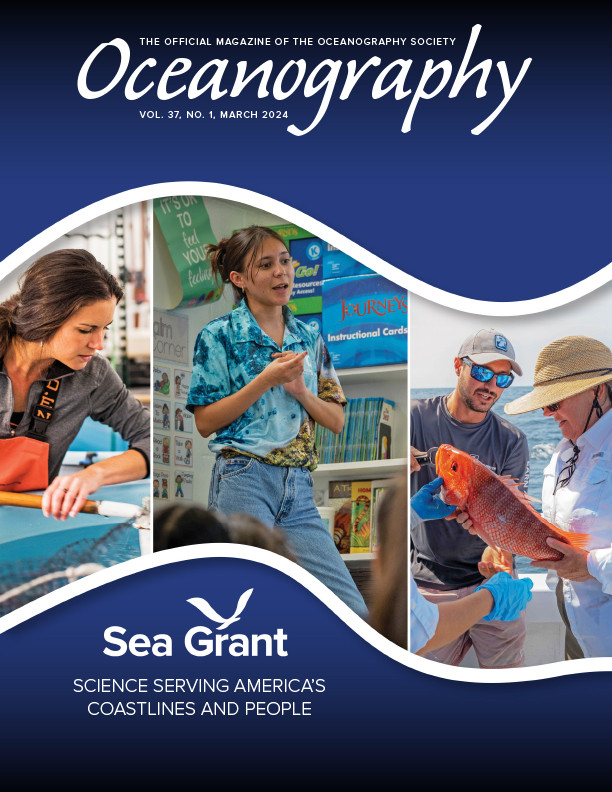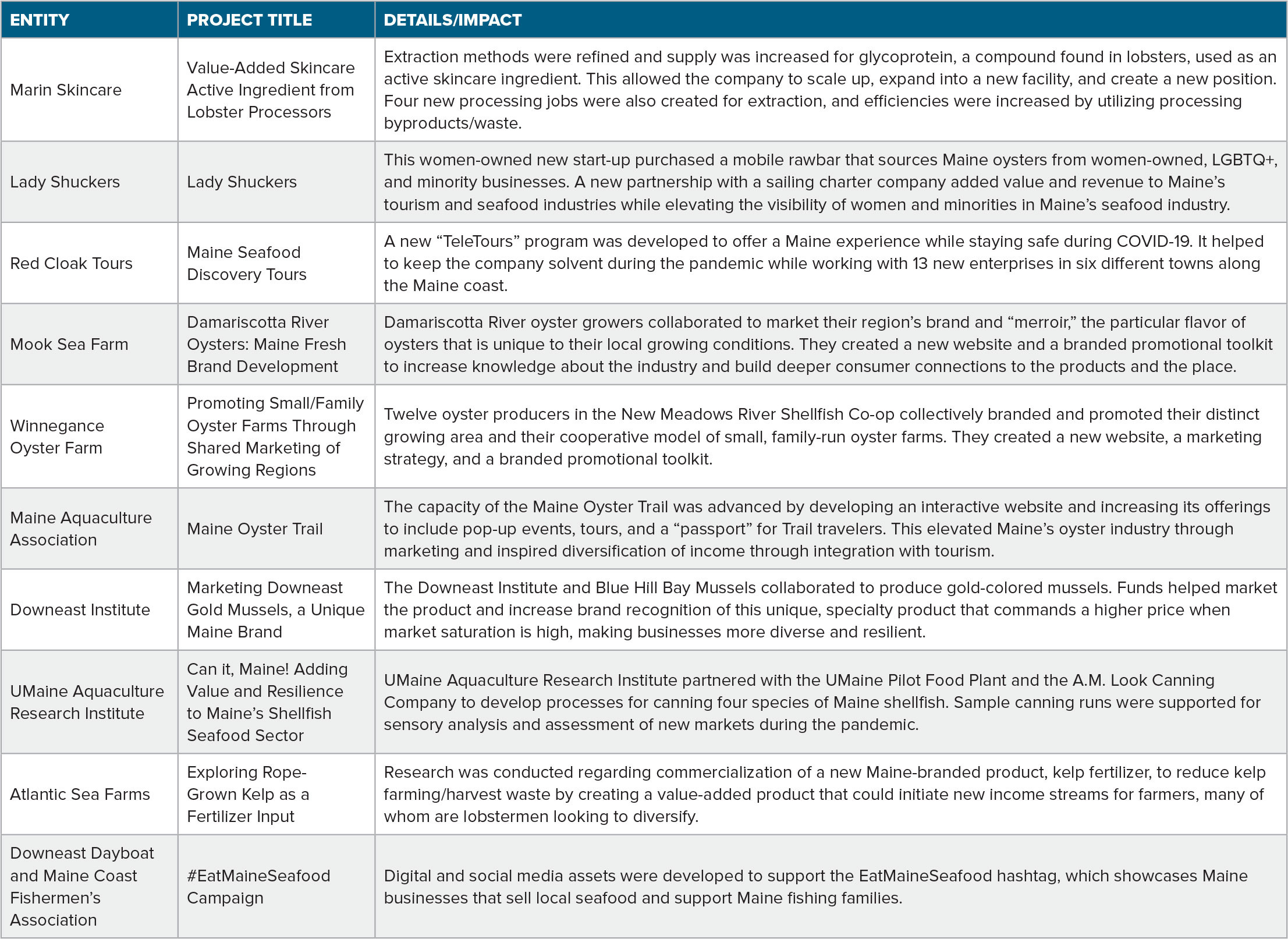Introduction
The NOAA National Sea Grant College Program provides expertise to protect and restore coastal ecosystems, supports resilient communities and economies, promotes sustainable fisheries and aquaculture, serves as a trusted source of information for coastal communities so they can use the best available science to make informed decisions, and prepares a skilled workforce that serves the needs of coastal communities and ecosystems. Additionally, Sea Grant supports cutting-edge research and provides leadership in efforts to develop innovative technologies.
After the onset of the COVID-19 pandemic in 2020, US coastal communities and economies immediately began to experience unprecedented challenges. In domestic and international markets, manufacturing and production of commodities were shut down or severely limited (Bennett et al., 2020). Businesses needed to pivot their models to stay solvent. Public health issues prompted the need for communities to invest in research and testing capacity. The uncertainties about the virus’s impacts underscored the need to deliver sound science directly to general audiences.
In response, the National Sea Grant Office (NSGO) established COVID-19 rapid response funding that was made available to all of the 34 Sea Grant programs to address challenges caused by the pandemic. In total, NSGO provided $3.4M, equivalent to up to $100K available to each Sea Grant program in FY 2020 and FY 2021. Four case studies described below are examples of how Sea Grant programs responded to coastal and Great Lakes community issues related to the pandemic. While one project was supported entirely by NSGO’s rapid response funding, and three by a combination of public and private funds, all are strong examples of how Sea Grant’s expertise and resources were leveraged to support communities in a time of crisis.
Case Study 1: Maine Sea Grant Buoys Businesses Affected by the Pandemic
Maine’s extensive, sparsely developed 3,500 mile (5,600 km) coastline and the Gulf of Maine’s nutrient-rich waters support a thriving marine economy. The state offers quality outdoor experiences, an abundance of seafood, working waterfronts, and a rich maritime heritage to residents and visitors alike. Maine coastal communities, whose cultures and economies are traditionally centered around the ocean and extracting value from it, depend on the viability of local businesses (Cramer et al., 2023; SEA Maine, 2023). COVID-19-related safety lockdowns and supply chain disruptions led to dramatic shifts in the prices and demand for seafood, and most of Maine’s valuable tourism activity vanished (Love et al., 2021; McGuire, 2021; Amos et al., 2022). Many businesses were forced to rapidly reconfigure their operations to manage labor, supply chain, and market roadblocks. The severity of the social/economic disruption prompted the urgent need for investment in coastal communities during this critical period to keep businesses afloat in the short term and build resilience to future disruptions.
In response, Maine Sea Grant (MESG) pursued NSGO COVID-19 rapid response funding to bolster Maine’s commercial seafood and tourism sectors, and the “Buoy Maine” initiative (Maine Sea Grant, 2021) was established to integrate MESG staff expertise in fisheries, aquaculture, tourism, and communications (Figure 1). The goal was to promote entrepreneurship, innovation, and greater resilience in Maine’s seafood and tourism sectors by helping businesses try new strategies and explore new markets for products or services. This effort focused on highlighting the Maine brand and experience, and helped Maine’s working waterfront businesses redefine operations, with the intent of emerging from the COVID-19 crisis stronger than when they entered it.
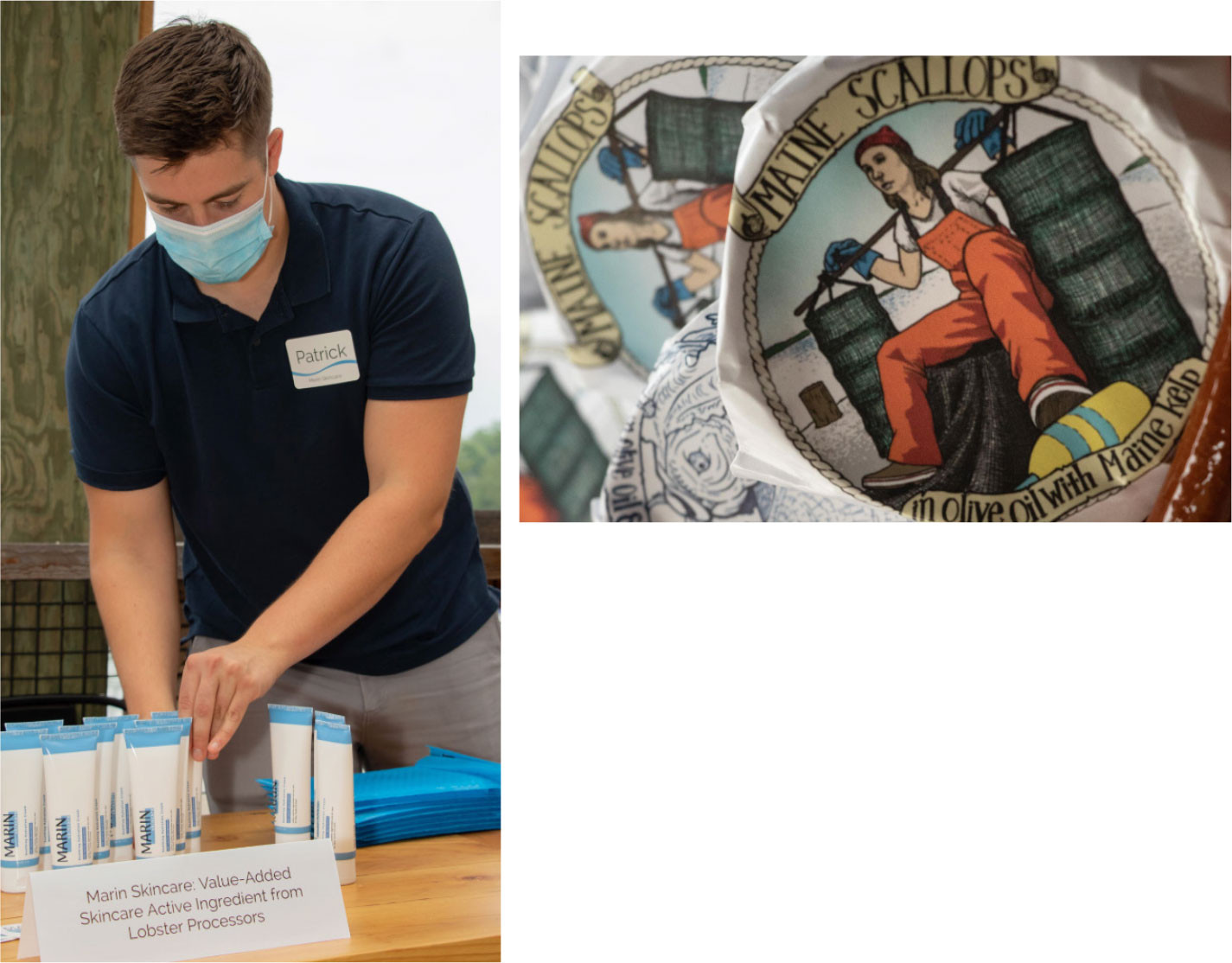
FIGURE 1. Buoy Maine investments supported value-added product development, including skincare products that utilize lobster glycoprotein and specialty canned items that extend the shelf life of shellfish. These investments helped Maine’s seafood industry build resilience to pandemic-related and future disruptions. Photo credit: Kathlyn Tenga-Gonzales. > High res figure
|
Eligible businesses and organizations were invited to participate in a Buoy Maine pitch competition to compete for awards. MESG brought together partners from across Maine’s seafood and tourism sectors, including working waterfront community and innovation/entrepreneurship leaders, to co-create a process that included providing competitors with pitch coaching, skill building, networking opportunities, and other assets to implement their emerging plans. Whether competitors were successful in receiving an award or not, a panel of expert judges provided each with constructive feedback, a comprehensive list of resources and expertise, and pathways to other investment opportunities.
Ten teams were awarded funds ranging from $12,000 to $14,000 for project implementation (Table 1). After six months, team members of funded projects gathered to share accomplishments and lessons learned and to connect with a larger investment/innovation network. This provided an opportunity for businesses to learn from their peers, establish new partnerships, and create a stronger, more diverse network supporting vibrant coastal communities and economies.
Buoy Maine brought businesses from across Maine’s seafood and tourism industries together in new ways, collectively catalyzing over 25 new partnerships. It enabled businesses to evaluate innovative methods to respond to the pandemic. Beyond new products, services, marketing, and partnership development, Buoy Maine projects increased the visibility of Maine’s seafood and tourism businesses and of Sea Grant as well. Buoy Maine projects were featured in over 20 media outlets including National Geographic, the Boston Globe, the Maine Mag, ABC, and NBC. Buoy Maine also served as a model for other Sea Grant programs. For example, Woods Hole Sea Grant integrated elements of Buoy Maine into COVID-relief efforts, and Georgia Sea Grant created a Buoy Maine related project “What’s the Hook?!,” a pitch competition to support the state’s seafood industry.
It is important to note that MESG, with the support of NSGO and partners, also benefited from the Buoy Maine investments. MESG expanded its network of partners, expertise, and assets, and shared lessons learned with colleagues to help create a new support model that could be used by other Sea Grant programs.
Case Study 1 Acknowledgments
The authors are grateful to all of our partners who made this project a success, as well as the sponsors: NOAA (NA18OAR4170103), Maine Community Foundation, Maine Technology Institute, Maine Aquaculture Innovation Center, and Bangor Savings Bank.
Case Study 2: Founding Hawai‘i’s Public Diagnostic Laboratory at the University of Hawai‘i at Mānoa
At the onset of the COVID-19 pandemic, Hawai‘i faced unique vulnerabilities. As the most geographically isolated land mass on the planet, Hawai‘i sits at the end of a long global supply chain vulnerable to disruptions. The state’s tourism-centered economy presented a constant threat of COVID-19 exposure and infection in vulnerable populations (Caldwell and Deemer, 2023). Native Hawaiian/Pacific Islander (NHPI) and Filipino communities faced disproportionate health disparities (Kaholokula et al., 2020; La Croix and Brown, 2020; Office of Hawaiian Affairs, 2020; Wang et al., 2020; Samoa et al., 2020) as they represent a significant portion of the State’s front-line workers: 30.1% of Native Hawaiian were employed in health care, social services, public administration, and education. Another 21.3% were employed in accommodation and food services (Akamine and Tian, 2018). Consistent monitoring of the vulnerable workforce required extensive and efficient testing capacity. However, in the early stages of the COVID-19 pandemic, Hawai‘i’s clinical testing landscape was reactive rather than proactive, with poor capacity to respond to emerging infectious diseases. No public diagnostic laboratory existed in the state, and private diagnostic laboratories were sending samples to the continental United States for processing because of extremely limited capacity (Table 2). This resulted in long wait times for test results and hampered efforts to track and mitigate the spread of the coronavirus.
TABLE 2. COVID testing capacity in Hawai‘i, May 2020 (source: State Labs Division). > High res table
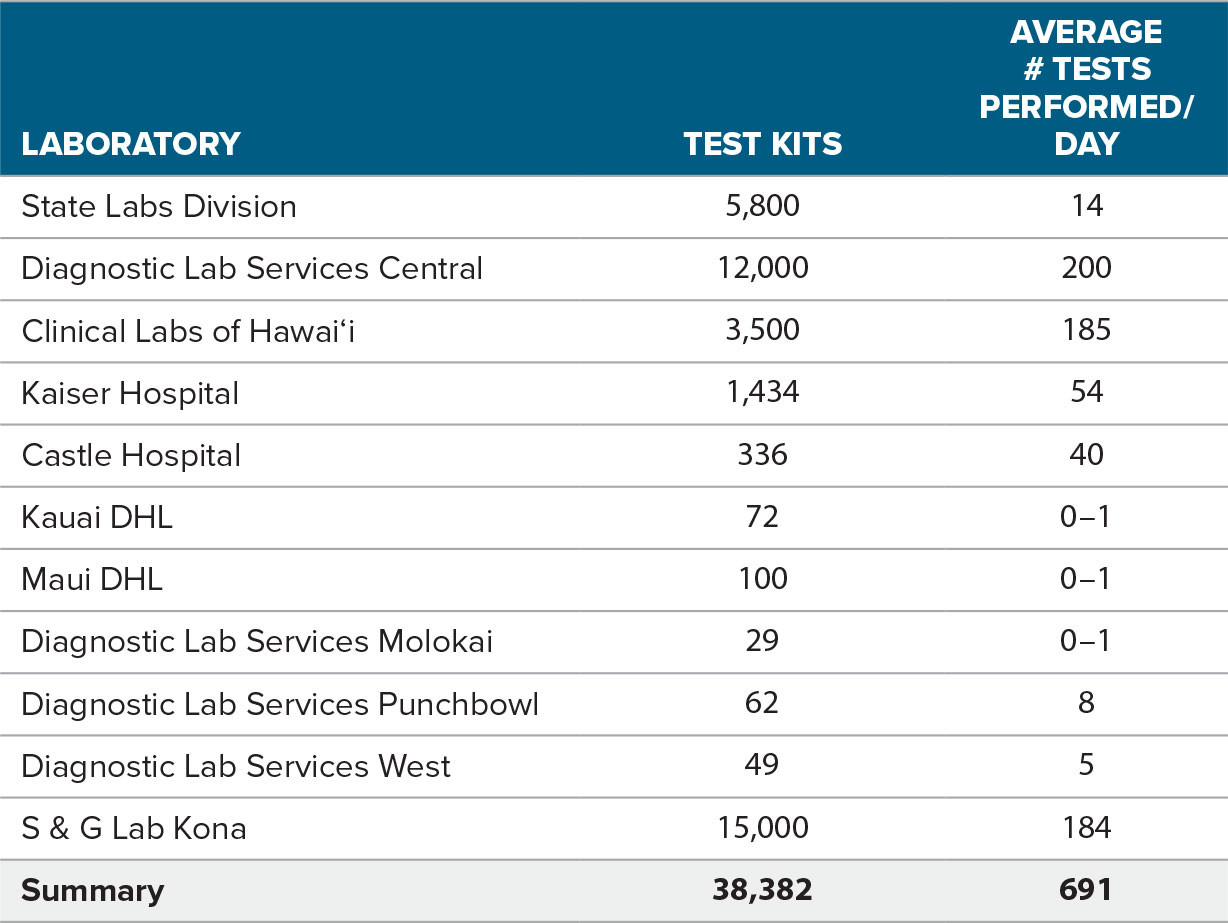
|
Recognizing the need for a public option for clinical diagnosis that also increased in-state testing capacity, a collaborative team was established consisting of faculty and staff from the University of Hawai‘i Departments of Tropical Medicine, Medical Microbiology and Pharmacology; the Pacific Center for Emerging Infectious Diseases Research at the John A. Burns School of Medicine (JABSOM); the Department of Oceanography and University of Hawai‘i Sea Grant College Program; the University Health Partners of Hawai‘i (UCERA); and the City and County of Honolulu Office of Climate Change, Sustainability and Resilience. This team successfully founded the Tropical Medicine Clinical Laboratory (TMCL) in April 2020. Within six months of the outbreak of the pandemic, this team had expanded the clinical testing landscape in Hawai‘i to include a public option providing surge capacity and seamlessly integrating into the State’s only research intensive biomedical research organization (Figure 2).
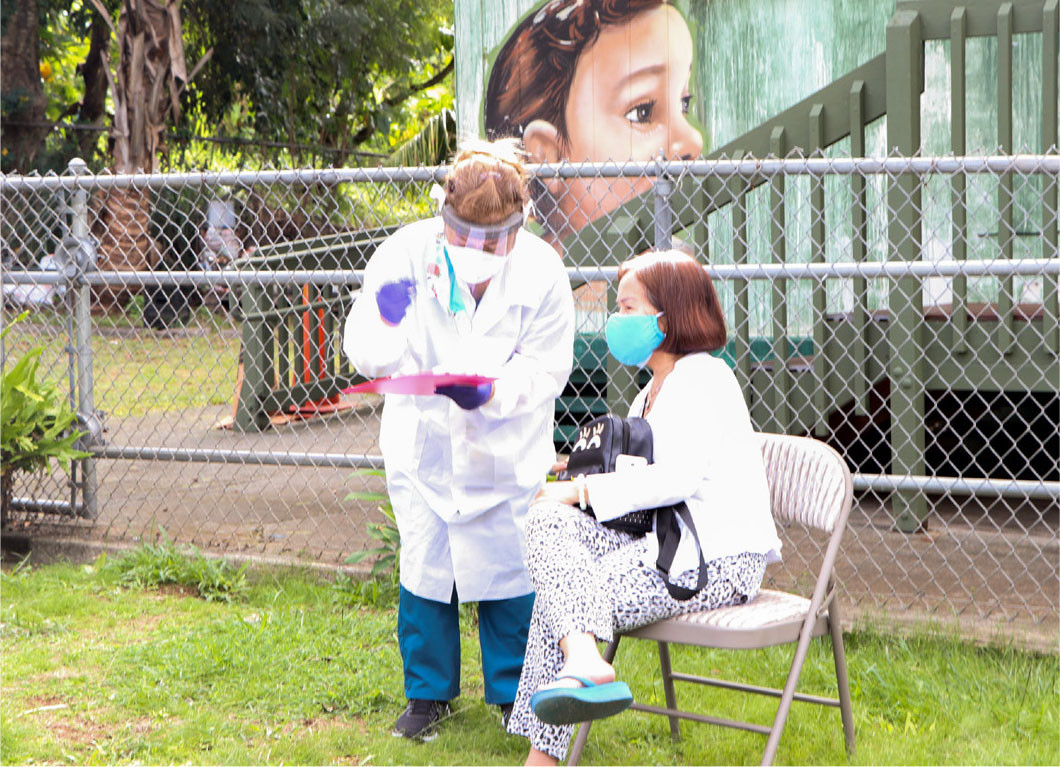
FIGURE 2. COVID-19 testing services were offered at Palolo Public Housing in Honolulu, Hawai‘i. Photo credit: TMCL. > High res figure
|
As a public laboratory, TMCL established a strong mission of public service and partnership with a core focus on serving the people of Hawai‘i through diagnostic testing, research, and education (Figure 3). As part of the team that founded the TMCL, Hawai‘i Sea Grant research and extension faculty contributed grant writing, public outreach, and partnership coordination to this effort. TMCL developed and leveraged partnerships with community health centers and grassroots organizations to reach communities with high vulnerability to COVID-19 exposure and limited access to testing, including Filipinos, Pacific Islanders, public housing residents, and the houseless.
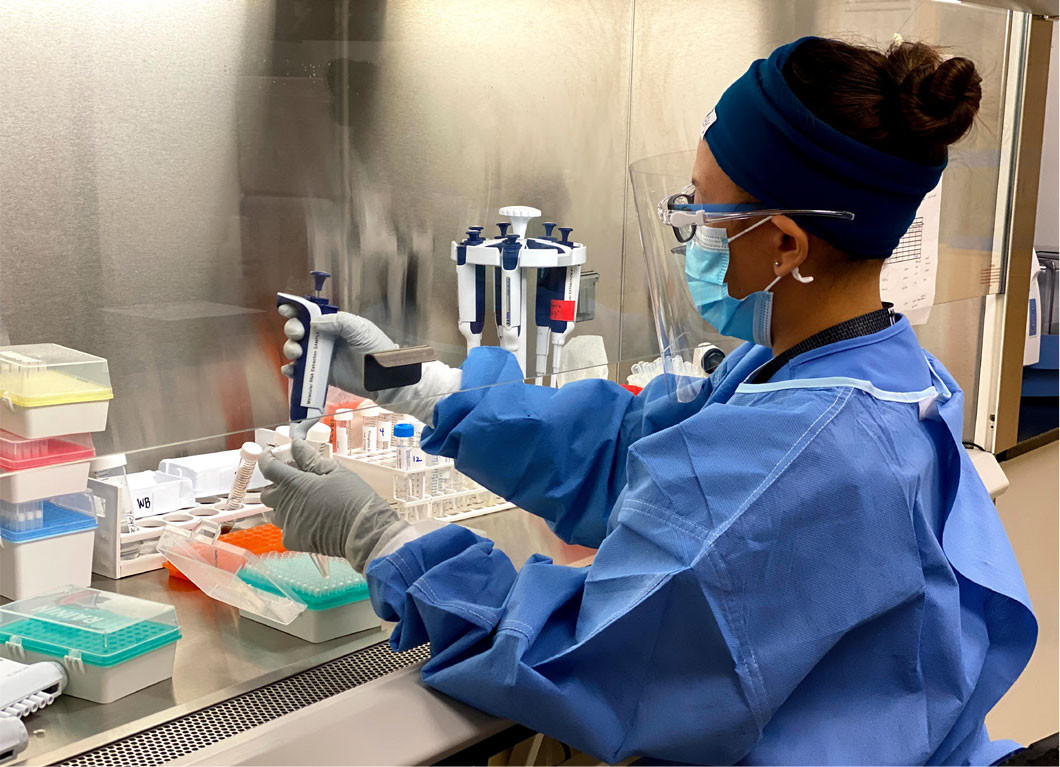
FIGURE 3. Patient samples were processed at the Tropical Medicine Clinical Laboratory established by Hawai‘i Sea Grant and partners in response to the pandemic. Photo credit: TMCL. > High res figure
|
While TMCL was founded to meet the immediate need of COVID-19 testing for underserved communities in Hawai‘i, it continues to serve the people of Hawai‘i and the Pacific Islands today and enhances the region‘s capacity to track emerging pathogens and develop diagnostic tools to detect tropical diseases. Many infectious disease threats prevalent in the Pacific Islands are understudied by laboratories in the continental United States, including dengue, rat lungworm, Zika, and chikungunya. These disease threats are projected to worsen with climate change. TMCL will continue to provide enhanced capacity for the diagnosis of and research on tropical diseases to people of Hawai‘i far into the future.
Case Study 2 Acknowledgments
The authors express deep gratitude to the entire staff of TMCL as well as the IT staff of UCERA and Jerris Hedges, Emeritus Dean of JABSOM, for effort dedicated to this project. TMCL was funded by the Rockefeller foundation (2020 HTH 008) and the City and County of Honolulu (CT-MAY-2000282).
Case Study 3: Exploring Payments for Ecosystem Services as a New Revenue Stream for Florida Shellfish Farmers
When the COVID-19 pandemic hit, the Florida shellfish industry lost almost all of its revenue stream, which is largely dependent on restaurant sales (Court et al., 2020). In response, a limited number of “buy-back programs” were initiated to provide options for shellfish industries to sell some of their product, much of which had grown too large for the consumer market. COVID rapid response funds received from the NSGO were utilized to purchase hard clams from shellfish farmers and then transfer those clams to restoration practitioners. This offered a short-term supplement to growers impacted by COVID, highlighted the need for alternative long-term revenue streams, and demonstrated the value of developing new markets for the shellfish aquaculture industry. However, creating a standing mechanism that pays farmers to grow clams for restoration projects or developing a functional payment-for-ecosystem-services plan require locally relevant data and improved policy infrastructure. The NSGO rapid response funds allowed exploration of these possibilities.
Nitrogen (N) pollution is one of the most serious threats to coastal ecosystem health because excess N can lead to eutrophication and harmful algal blooms. Shellfish beds can serve as N removal “hotspots” by transferring nutrients from consumed phytoplankton to sediments, which results in denitrification (the microbial mediated conversion of harmful nitrogen to harmless nitrogen gas), as well as N storage in shell and tissue (Smyth et al., 2013; Kellogg et al., 2014; Bricker et al., 2020). There is compelling evidence that shellfish can reduce N pollution and be used as a nutrient best management practice (Rose et al., 2021; Cornwell et al., 2023). However, data from Florida, where a growing number of estuaries suffer from N pollution, are noticeably absent (Ray et al.,2021).
Florida recently approved the creation of restoration leases (Florida Department of State, 2022), where shellfish can be planted for the sole purpose of restoration. The state currently ranks fifth in the nation for bivalve shellfish aquaculture (USDA, 2019) and has potential for continued expansion. If incentives are reasonable enough to compensate shellfish farmers for producing additional products for restoration, they could pave the way for a secondary “restoration market” and increase profitability for the shellfish industry. In addition, if existing commercial production of shellfish results in N reduction, there could be a mechanism for paying or otherwise compensating farmers for the environmental benefit their product provides.
To explore these options, our team from the University of Florida and Florida Sea Grant reviewed state legislation and policy, measured N removal at shellfish farms, and determined the price that local water treatment facilities were willing to pay for N removal services (Figure 4). With locally relevant data from clam and oyster aquaculture, the team assessed the potential for shellfish aquaculture to expand into water quality management and restoration planning. The team also surveyed shellfish producers to gauge interest in such a program. If scientific, legal, and economic feasibility can be demonstrated, this alternate source of revenue for farmed shellfish will contribute to ecosystem restoration, industry stability, and workforce development.
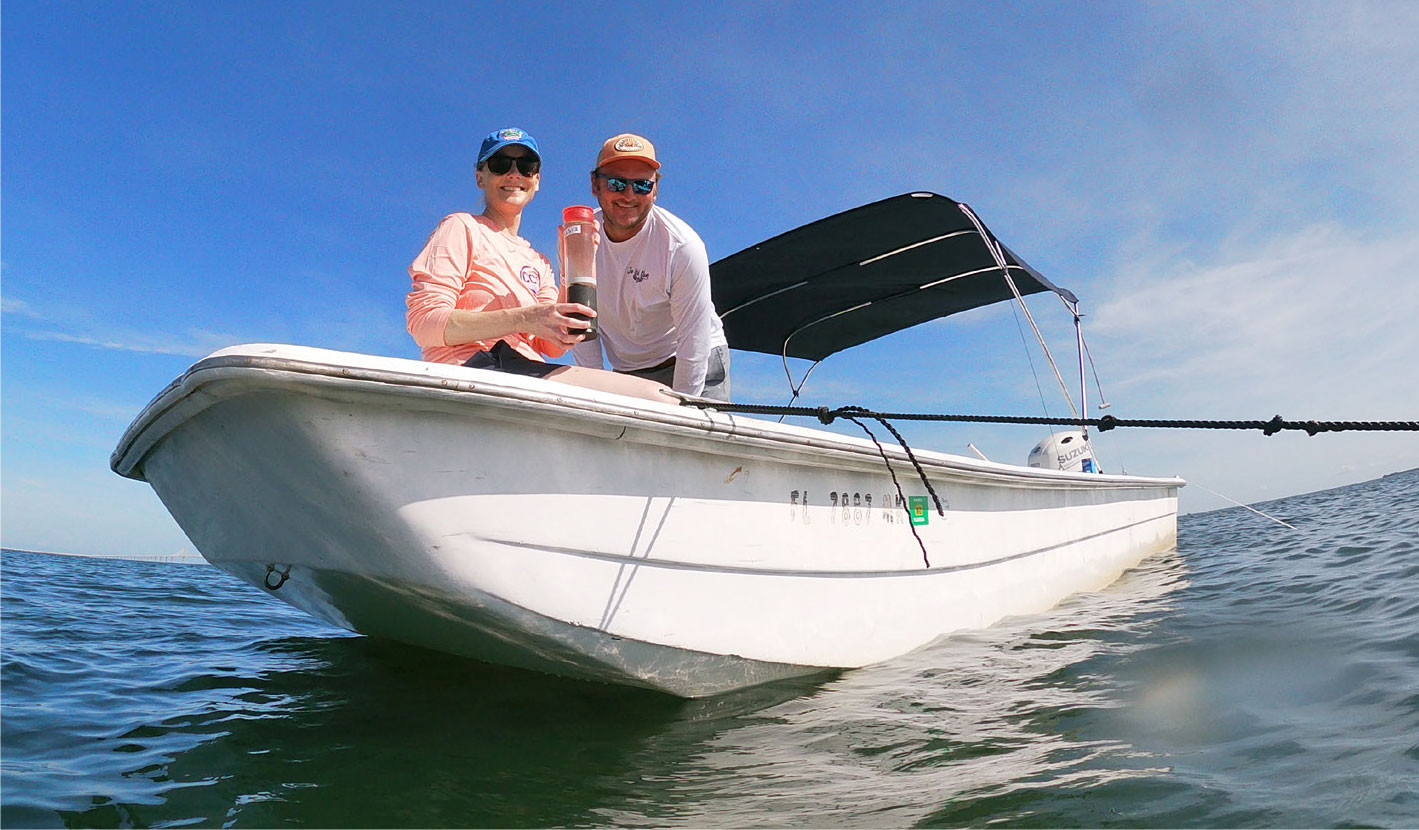
FIGURE 4. A Florida Sea Grant and University of Florida Tropical Research and Education Center team worked with industry partners to quantify nitrogen removal services due to shellfish farming activities. Sediment cores like the one shown here were collected to measure denitrification rates. These locally relevant data can be used in nutrient credit trading programs, which can provide additional revenue to the aquaculture industry. Photo credit: A. Collins. > High res figure
|
While the benefits of shellfish aquaculture are celebrated by resource managers, industry representatives, and legislators, the relationship between N removal and shellfish aquaculture in Florida has yet to reach consensus. Quantifying the amount and monetary value of N removed by shellfish aquaculture is more important now than ever, especially if restoration leases could help ecosystems that are exhibiting symptoms of N pollution and provide a new economic opportunity for shellfish farmers. Using 2022 production and total acreage, we estimate that hard clam aquaculture could generate at least an additional $126,537 annually through N credits. Based on the results from this project, an online shellfish calculator tool (https://ufl864.outgrow.us/ufl864-2) was created to calculate total N removal and related value of that ecosystem service. This value represents the potential environmental benefit income the farmer could receive for N removal services when sales are impossible, such as during the COVID-19 pandemic. This project represents a critical step in moving forward with restoration initiatives as well as a payment-for-ecosystem-services plan, both of which could provide alternate revenue streams and encourage the growth of this important industry.
Case Study 3 Acknowledgments
The authors would like to thank the Florida shellfish farmers who contributed their time and resources to these efforts, as well as NSGO and the Nature Conservancy for funding this work. University of Florida and Florida Sea Grant faculty who were critical to this work include Thomas Ankersen, Shirley Baker, Savanna Barry, Matthew DePaolis, Gabrielle Foursa, Kelly Grogan, Shelly Krueger, Sherry Larkin, Erick Lovestrand, Joshua Patterson, and Leslie Sturmer.
Case Study 4: New York and New Jersey Sea Grant Promote “Beach Safely”
In March of 2020, the COVID-19 virus reached New York, and over the next few months, the state was shut down, forcing people to work remotely; travel was restricted, and long lines formed for testing. With summer months approaching, it was hoped there might be an end to the pandemic, but it became increasingly apparent that would not be the case. However, it was announced that New York would allow parks and beaches to open in May 2020, with the caveat that if best practices were not maintained and COVID-19 numbers spiked, they would need to be closed again.
New York Sea Grant (NYSG) recognized this as an opportunity to provide outreach and education to beachgoers to ensure not only that their health safety was maintained but also that they were aware of beach hazards. To provide consistent messaging across the region, NYSG collaborated with other Sea Grant partners to develop the inclusive and multilingual (eventually award-winning) “Beach Safely” social media campaign.
Led by NYSG and New Jersey Sea Grant Consortium (NJSG), Beach Safely was truly a collaborative process that also engaged Connecticut and Delaware Sea Grant programs as project advisors for a campaign focused on social media platforms and eye-catching graphics (Figure 5). The group also sought input from the designer of a previous Great Lakes Sea Grant water safety campaign.
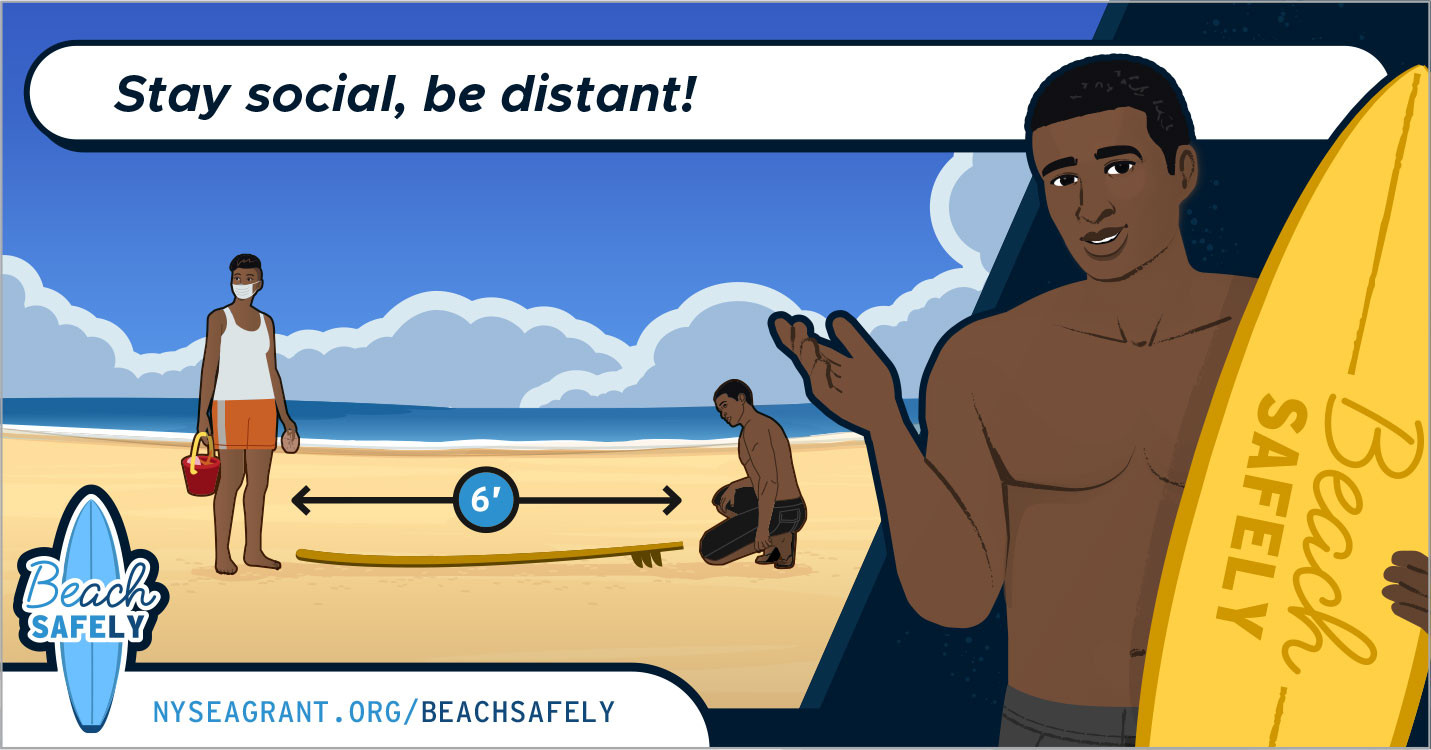
FIGURE 5. New York Sea Grant and New Jersey Sea Grant collaborated to develop the Beach Safely campaign that featured safe practices for beach users during the pandemic. > High res figure
|
Nine social media posts were released weekly through the summer, beginning with the Fourth of July weekend. Posted in both English and Spanish by NYSG’s social media platforms, then reposted by NJSG and others, Beach Safely consisted of the following messages:
• Week 1: Stay Social, Be Distant!
• Week 2: Break the Grip of the Rip!
• Week 3: Shoreline Rescue!
• Week 4: Grab Your Sunscreen and Sanitizer!
• Week 5: Be a Water Watcher!
• Week 6: Stay Dry When Waves Are High!
• Week 7: Don’t Let Your Mask Become Marine Debris!
• Week 8: Pay Attention to Lifeguards!
• Week 9: Rock the Jacket, Tailor Your Type!
In addition to graphics, each social media post was accompanied by a short description of beach and health hazards with the appropriate preventative messaging. It was important to ensure the images depicted safe actions, and many featured characters that were socially distant or wearing masks.
Running on Facebook and Twitter, the campaign was widely successful and received high praise from Sea Grant programs, NSGO, and other organizations as well as media sources. In total, the posts reached over 32,000 people and received over 1,000 engagements across the nation, including from state and federal agencies, universities, nongovernmental organizations, and many others. Beach Safely’s engagement rate was almost 10 times higher than what is considered to be high engagement, and it received the APEX Annual Award for Publication Excellence and the Best Public Awareness Campaign Folio Award from the Fair Media Council.
With the pandemic ongoing as summer 2021 approached, NYSG and NJSG decided to continue to provide Beach Safely social media messaging and to add a simultaneous print campaign. As restrictions were loosened, many of the images were altered to remove or reduce face masks, and the associated text was changed. The major addition was a poster that compiled all nine Beach Safely images and messages. The poster and nine postcards were printed and distributed to local beaches.
By the summer of 2022, while COVID-19 was still a safety hazard, many people had received vaccines and most restrictions had been lifted. Consequently, NYSG and NJSGC removed the pandemic-related information from the campaign, which was always intended to develop messaging that would be sustainable. The “Stay Social, Be Distant!” messaging was dropped, “Grab Your Sunscreen and Sanitizer” was adapted to become “Wear Sun Protection,” and “Don’t Let Your Mask Become Marine Debris” was changed to “Don’t Let Your Trash Become Marine Debris.” In response to more recent, relevant issues, two additional messages and images were created:
• Share the Beach with Wildlife!
• Never Dig Deeper than Your Knees!
During the early part of the COVID-19 pandemic, while there was confusion and inconsistent messaging from many agencies, Sea Grant programs worked together to develop relevant extension publications to help beachgoers remain safe from health and beach hazards. Beach Safely’s development illustrated how Sea Grant can work with and rely on the network of 34 state-based programs for expertise, support, and resources to better serve local communities. In addition, educational materials, such as Beach Safely, demonstrate that Sea Grant programs can help build environmentally literate communities that understand and utilize the best available science to make informed decisions.
Case Study 4 Acknowledgments
Appreciation is extended to Joel Davenport, who designed graphics; Tom Herrington of NJSGC, who advised on content; and Danica Bellini (formerly NJSGC), who participated in developing the social media campaign. Thanks are also given to the National Sea Grant COVID-19 rapid response grant opportunity that funded this work.
Conclusion
Sea Grant was uniquely positioned to respond effectively to the challenges posed by the COVID-19 pandemic based on the network’s understanding of nuanced community needs; history of being a trusted, “boots on the ground” resource; ability to bring diverse partners together to leverage expertise and resources; connections to research, extension, and education; and deep commitment to the long term. The case studies described here are just a few examples of Sea Grant in action during a time of crisis. They also show that even modest investments can have big impacts and demonstrate how taking chances and trying new things opens up myriad beneficial partnerships and new opportunities. What started out as a short-term, rapid-response exercise to address immediate issues built capacity for the longer term. These case studies show that when Sea Grant serves the needs of marginalized communities, everyone benefits; that diversifying income streams through new markets, products, and services can strengthen resilience to future disruptions; and that social media can be an impactful communication tool during the good times and bad.

